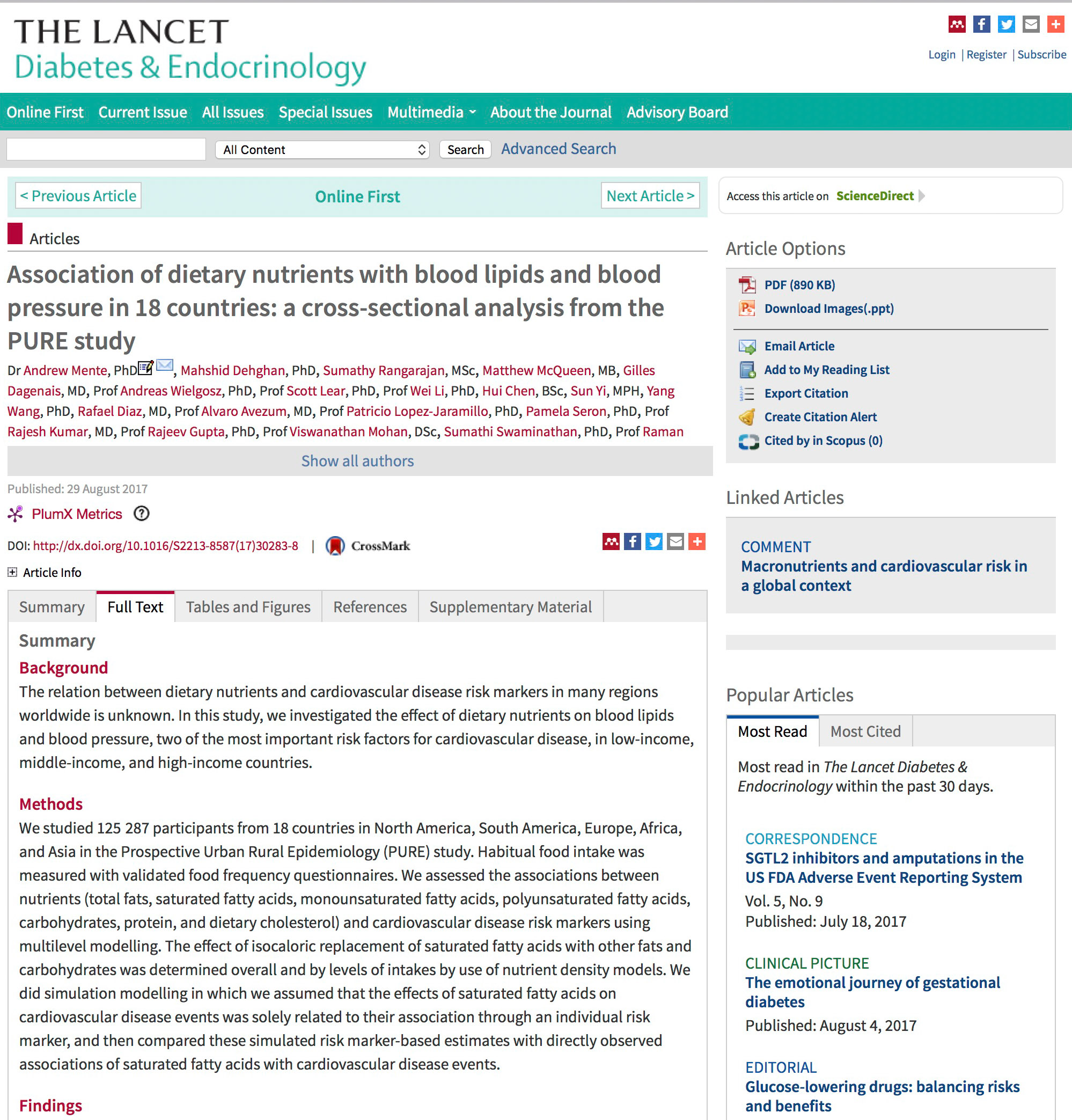
This is a companion paper to the one looking at the impact of diet (specifically fat, carbohydrates, and protein) on cardiovascular disease (see: Just Read: Validation of Low(er) Carb High(er) Fat Diets: The PURE Study and CVD/Overall Death) and overall death rates as part of the PURE study – 18 countries and 125,287 people.
I am once again making the title a little bolder than the original (Association of dietary nutrients with blood lipids and blood pressure in 18 countries: a cross-sectional analysis from the PURE study) to encapsulate the main findings.
Higher Fat in the Diet, Better Cholesterol/Lipid Profiles
This paper is going to be harder for a lay person to understand relative to the other one, and I’m actually not going to try and explain it in lay terms.
It reinforces the other paper, though, by showing that predicted worsening of overall cholesterol profiles doesn’t happen when people have more fat in their diet. It’s really the opposite, the less fat in the diet, the worse the overall cholesterol profile becomes. Key thing to remember that a low-fat diet = a high carbohydrate diet, because reducing one nutrient results in another being increased.
The difference, as with death rates, is also nearly inverse, as energy from carbohydrates go up, things get worse, as they go down, things get better.
The myth of the non-adherent dieter: people are eating more carbohydrates
They’ve been doing what they were told to do – eat less fat
This chart shows how rise in calories over last decades has been entirely from carbs. 30%+ increase since 1965. #dontfearfat pic.twitter.com/uLZ0MQSKE0
— Nina Teicholz, PhD (@bigfatsurprise) July 28, 2017
The average carbohydrate energy percentage in the study was a very high 61 %, with higher levels in lower income countries.
The overall cholesterol picture
The LDL (“bad cholesterol”) has been around a long time. This study shows that it doesn’t predict CVD events very well at all compared to other measures that are less used in medicine today. One of these that I wrote about previously is triglycerides. (see: Just Read: Triglycerides and Cardiovascular Disease – American Heart Association Scientific Statement). Another is ApoB/ApoA1 as well as HDL. Even though more fat in the diet increases LDL, it also decreases triglycerides and increases HDL, plus has an effect on the size of LDL particles. Put together, it’s not what we’ve been told.
It’s very complicated to explain/understand how eating more fat actually improves the overall cholesterol picture. These are the findings, though. Also, a reminder that eating more cholesterol does not raise cholesterol levels – this is also well studied, and reflected in the latest U.S. Nutritional Guidelines.
In conclusion, high carbohydrate intake has the most adverse impact on cardiovascular disease risk factors, whereas monounsaturated fatty acids seem to be bene cial and saturated fatty acids are not harmful. Reducing saturated fatty acids and replacing them with carbohydrates might have an adverse e ect on cardiovascular disease risk. Therefore, determining the net clinical e ects of nutrients on cardiovascular disease risk requires information from large studies on clinical outcomes. Current recommendations to reduce total fat and saturated fatty acids in all populations, which de facto increases carbohydrate intake, are not supported by our data.
Note on Saturated Fats
It’s worth remembering that most saturated fats in the SAD (standard American diet) come from processed foods, which may confound advice around eating it. See this blog post for more about that.